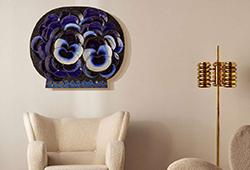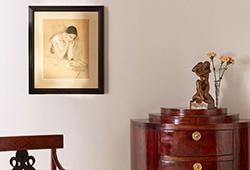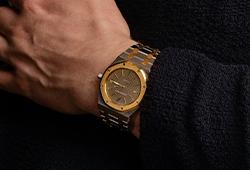Helene Schmitz
"Alabama Fields", 2013
From the series "Kudzu Project". Signed Helene Schmitz and numbered 2/3 on label verso. Printed in 2016. Archival Inkjet print, image 67 x 85 cm. Including frame 81 x 97 cm.
Näyttelyt
Maria Lund Gallery, Paris, "Helene Schmitz - Kudzu Project", 7 November - 7 December 2013, another example exhibited.
Muut tiedot
"Nature is not sentimental. It evolves according to its own agenda: to move forward or backward, to dominate or be dominated, to survive or perish… Despite this reality, humanity has always attributed its own qualities, such as kindness or cruelty. And art reflects that. In the Kudzu project, the eye of Swedish photographer Helene Schmitz observes and records the phenomena of nature with a heightened consciousness of the ephemeral. To preserve through photography is her main motivation.
The Kudzu, originating from Japan, the Kudzu (Pueraria lobata) was introduced to the United States at the end of the 19th century, for its decorative virtues as a floor-covering plant; it was then massively planted from the 1930s onwards to fix the eroded floors in the South — in Alabama, in Georgia and in the Mississippi. Very fast and very strong, these leaves of three large leaflets mounted on thin stems spread: in the right environment, the Kudzu can grow up to 30 cm in a day! Thus, within twenty years, this imported plant deemed pretty and useful at first became a harmful plant, "the wine that devoured the South”. The Kudzu spreads, covers, surrounds with its tendrils, smothers almost everything it meets that is inanimate — trees, bushes, flowers, roads, houses — transforming the landscape into a giant Kudzu plantation, horrifying and fascinating. Which land art artist would have dared to conceive a project of such scale? The plants form a uniform cover, creating the illusion of an ensemble, a big ocean fixed in its movements and made of a single matter: an abstract, infinite sculpture."
Quote from Galerie Maria Lund, Paris.




































